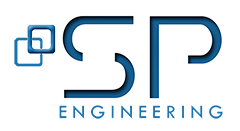SIMULATION
[/vc_column_text][vc_column_text el_class=”single-tab-content”]Simulation, using simulation software, is the science of creating dynamics models staticaly exact to represent the behavior of real systems in order to subject them to predictive experimentation. These experiments or scenarios allow to answer questions of the type ‘what would happen if’ without risk or disruption to the real system.
Discrete event simulation works by modeling individual events that occur at given time intervals, taking into account resources, constraints and their interactions. It also includes the random and variable nature of real life. In this way, a model behaves like a real process, such as a manufacturing line, a call center or a handling system in a logistics center.
Processes that integrate complex variability, perturbations and interactions are ideal for simulation.
Other techniques for evaluating processes, such as Excel spreadsheets and flow charts, often ignore these factors or treat them as averages.[/vc_column_text][/vc_column][vc_column width=”1/2″][vc_empty_space height=”90″][vc_video link=”https://vimeo.com/241021118″ align=”right”][vc_column_text]Flow simulation of a dynamic warehouse for aluminium & PVC profiles[/vc_column_text][/vc_column][/vc_row][vc_row full_width=”stretch_row” el_class=”about-tab-box sectpad” css=”.vc_custom_1507750483675{margin-top: -70px !important;}”][vc_column][vc_column_text el_class=”single-tab-content”]Also, the simulation provides significant advantages over a life-size experiment in terms of cost, time and repeatability in the presence of variability, disruption and complexity. Also, the simulation provides significant advantages over a life-size experiment in terms of cost, time and repeatability in the presence of variability, disruption and complexity. For exemple, imagine conducting of a life-size experiments to test scenarios like ‘what if’ in a production line or an hospital trauma unit. It would be at best impractical, at worst very dangerous.
Simulation is used in multiple contexts:
• Continuous improvement and reorganization of existing facilities, to test improvement projects, optimize them and quantify their return on investment
• Investment in new installations, to test concepts, to define the target organization (industrial and logistic), to justify or to limit the necessary investments.
• Strategic reflections, particularly to build master plans
The simulation allows to answer precisely to many questions such as :
How many means by position should be implemented and how connect it?
Which sizes of stock IN PROGRESS should be provided?
What will be the output of the positions?
What will be the occupancy rate of the operators?
What will be the impact of hazards (breakdowns, scrap, etc.) on performance?
How should handling be organized to avoid flow interruption and optimize power supply to the work positions?
What capacity reserve should be provided for possible increases in production?
Examples of question in the context of industrial and logistic reorganization:
What actions should be envisaged to improve productivity?
Should we change equipment, add means, modify production management, add human ressources?
What will be the impact of the actions on the processes envisaged in the continuous improvement programs, 6-sigma, Lean manufacturing?
What needs to change in the event of changes in demand (mix and product volume)?
